CIR Report January 2019 (2)
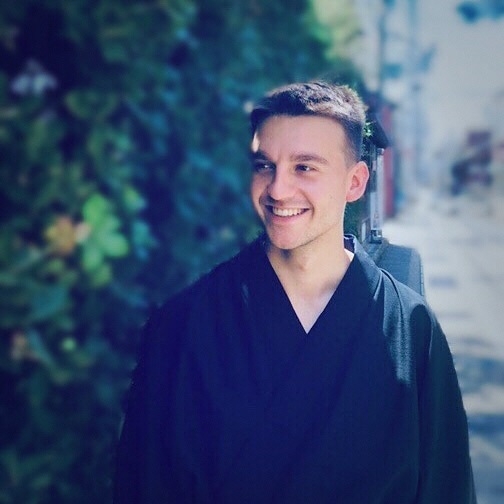
By Bert Collin
(Coordinator for International Relations)
Hello everyone!
It has been a while. The JET year has turned and suddenly I find myself not only in my second year on this job, but also emancipated from my Benjamin position and now a sempai to our newest colleague CIR: Hayley Rothman, from New York City. It is often said that explaining matters to someone is the best way to learn about them yourself. I am now experiencing this, and as I participate in and help with the organisation of recurring events this year, I find myself more confident and relaxed.
Since I wrote my first report shortly after the start of my JET career, this report will mainly summarize the main events of the past year, with a focus on my private time, discoveries, and travels.
Autumn in Kanazawa is beautiful. A bright blue sky, the freshest air, and autumn colours conspire to make this time of the year absolutely magical. I try to be continually grateful for the fact that my workplace is close enough to the gorgeous Kanazawa Castle Park that I can walk there and back after lunch on my break. The orange colour of the maple leaves helps contribute to the season’s atmosphere.
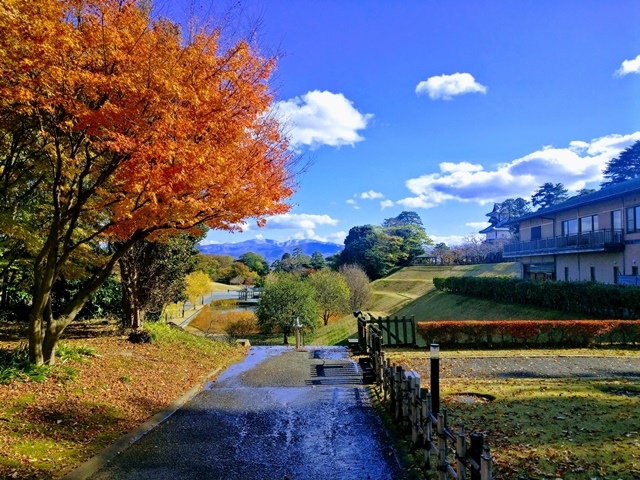
|
| Kanazawa Castle Park in Autumn
|
Autumn also means Halloween. I have not had any trick-or-treaters at my door, but I have seen Kanazawa youngsters dressed up in elaborate and original costumes, gathering on the main square in the centre of town. Go to a tea or coffeehouse at Higashi Chaya during this time of year, and you will get an originally crafted Halloween-themed treat with your drink. Or if you can’t get enough of sweets, there’s the Ishikawa Sweets Fair every year at the Shiinoki Cultural Complex, where you can enjoy spooky and beautiful creations from all over the prefecture.
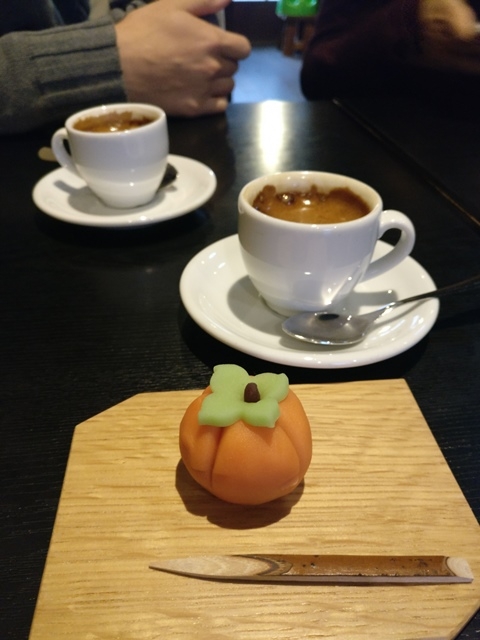
|
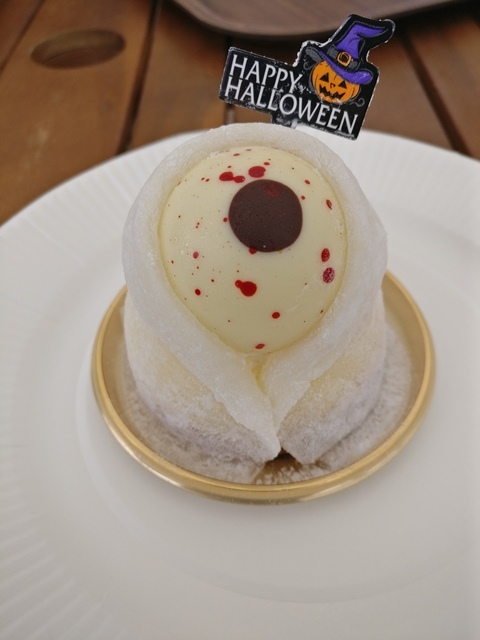
|
| Halloween Sweets at Higashi Chaya |
Ishikawa Sweets Fair 2017
|
Kanazawa Marathon, one of the biggest events of the city, also falls in the busy month of October. The race, established in 2015, welcomes about 12,000 runners from 17 different countries. The City of Kanazawa invites runners from its sister cities to participate. The City then welcomes the delegations and hosts them as they discover the city’s food, culture, and history, and of course, on the race day we at the International Exchange Section are there to cheer them on. From Ghent, we have had the pleasure of welcoming Mr. Paul-Henri ‘s Heeren for the 4th year in a row now, meaning he has completed every Kanazawa Marathon in history. This year, he was joined by his friend Luc Peerlinck, who once was Belgian Champion of Cross Country Running. This year too, the event was a success, as all delegations from the sister cities completed the race and left Kanazawa satisfied.
At the end of autumn, the CIR mid-term conference is held in Tokyo. Last year I participated in the 3 days of training, attending lectures and meeting my friends and colleagues from all over Japan. The training connected to a long weekend, so I spent almost a full week in Tokyo. Then, after the conference ended, I was barely back in Kanazawa or I had to leave for Tokyo again. I would go on my very first shucchou or business trip! The Japan Belgium Society had their general assembly on the evening of Sinterklaas. I also paid a visit to the Belgian Embassy, and was introduced to many esteemed guests at the evening party, including education minister Hayashi. Since I have studied in Kobe 4 years ago with a scholarship from his ministry, it felt very good to thank the man in person! In between my visit to the embassy and the evening meeting, I found a peaceful park to catch my breath. It was really nice to find a quiet park where I was able to read a book surrounded by autumn foliage in the middle of this city of millions.
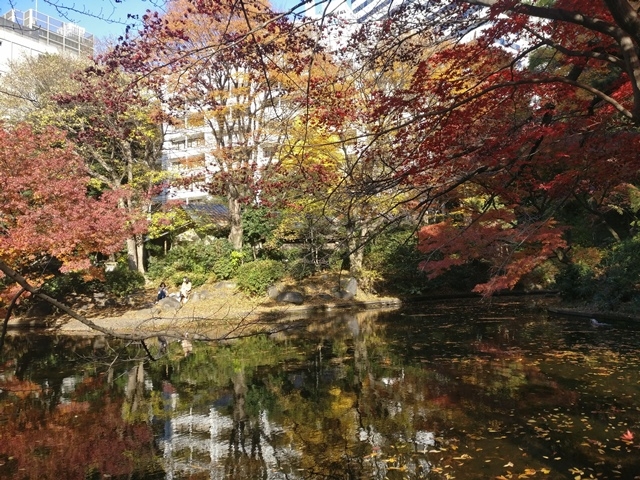
|
| Peaceful Garden Tokyo
|
In December, one big event for me was the visit of 3 youth soccer coaches from KAA Gent, a 1st division soccer club from Kanazawa’s sister city. They came as part of a sports exchange program, and they held presentation and discussions with Kanazawa soccer coaches. They also held several trainings with Kanazawa’s Zweigen youth club, and I was there on the field to help translate the instructions. I am far from a soccer expert, so the terminology was new for me, and running around on the field giving the right, accurate instructions, definitely was a challenge, albeit a very fun one.
Then, finally, winter hit us. I have always been a fan of snow. In Belgium, snow rarely piles up more than 5-10cm, and even though it creates chaos on the Belgian road network, I always enjoyed it. I also enjoy winter sports, so I was looking forward to snow and skiing. I can’t say however that I was expecting the amount of snow that we ended up getting! Kanazawa received the most snowfall in 37 years, taking residents of every generation by surprise. It was hard to find someone who could actively remember the last time they had experienced up to a meter of snow in the city. Temperatures do not drop much below 0°C, but every time the snow was about to melt away, a new snowstorm created a fresh thick layer, leaving us with snow until early spring. One of the obvious advantages of all this snow was that it created an absolutely magical scenery in an already beautiful townscape.
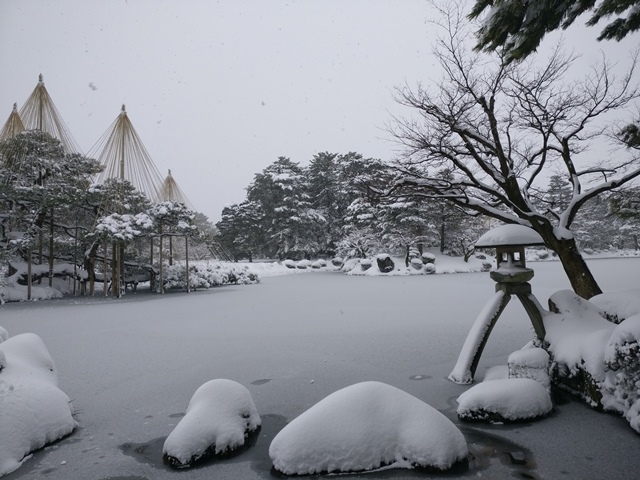
|
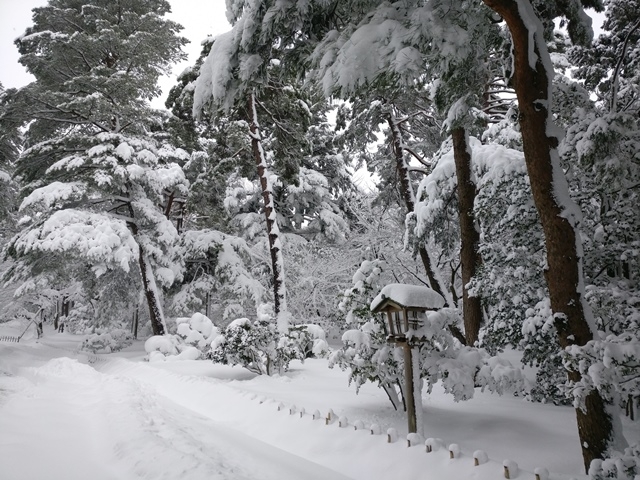
|
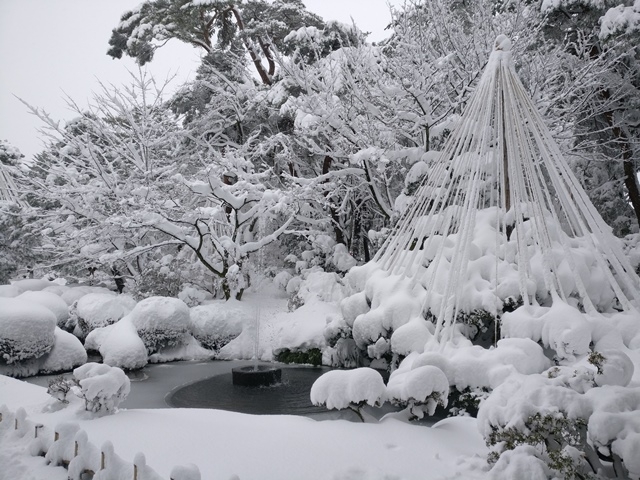
|
| Kenrokuen Winter 1 |
Kenrokuen Winter 2 |
Kenrokuen Winter 3 |
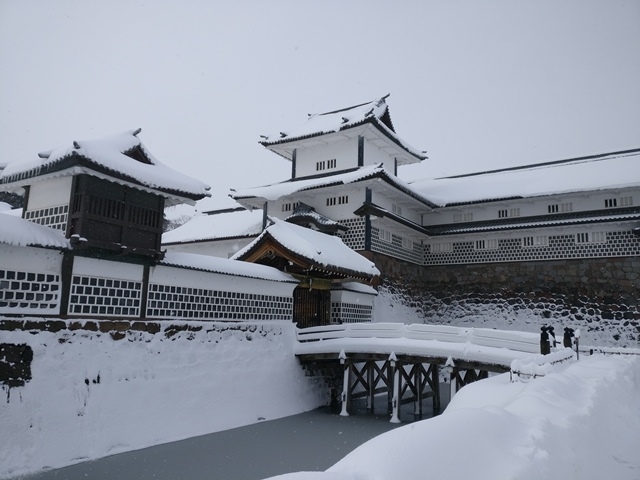
|
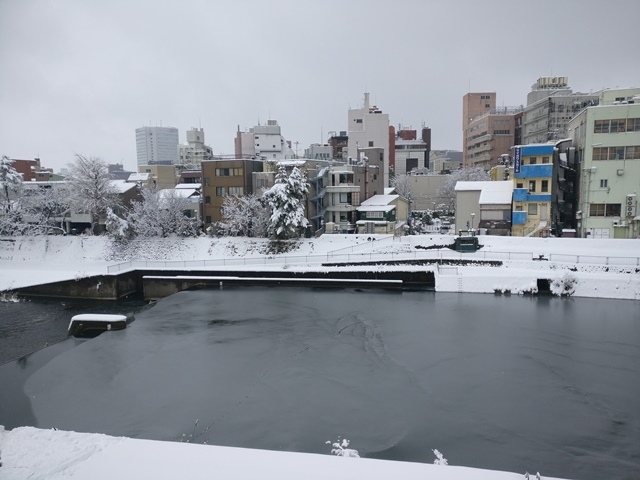
|
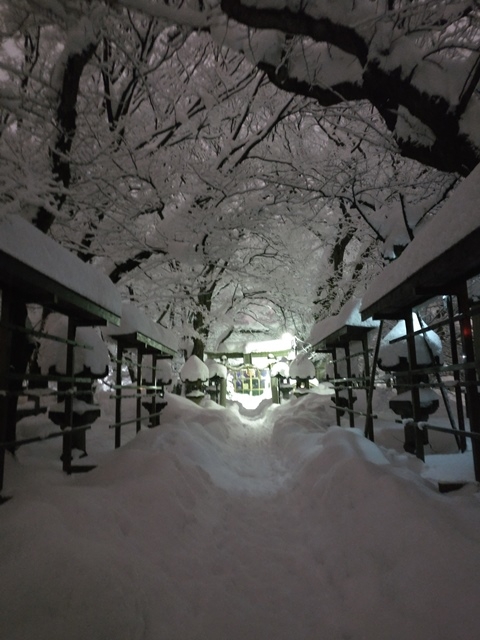
|
| Kanazawa Castle Winter |
Saigawa River in Winter |
Magical Winter Shrine 1 |
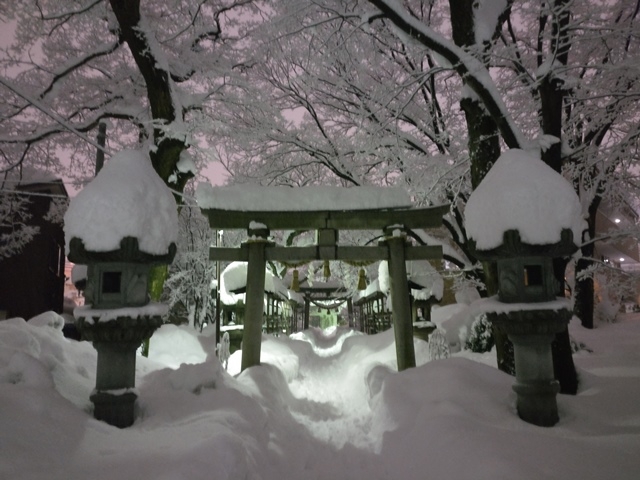
|
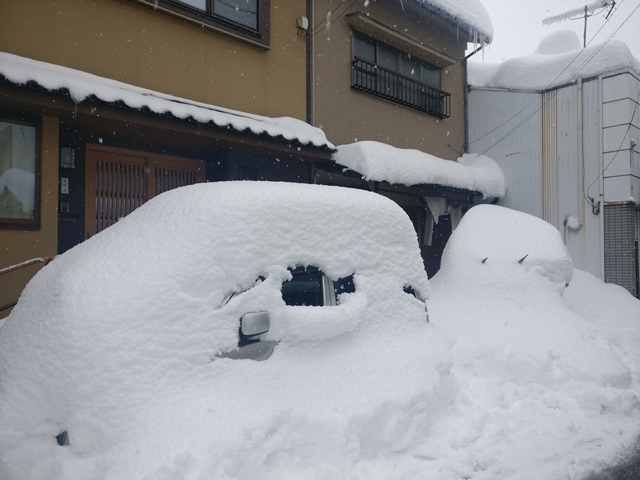
|
| Magical Winter Shrine 2 |
Cars Covered in Snow |
It wasn’t so much the snow as the persistently short, dark and grey days that got me down in the end. Luckily, I had my respite; over New Year’s, I had a wonderful 10 days in warm Taiwan, in February I went back home to a cold but sunny Belgium for 2 weeks, and from January to February I went skiing about 6 times. I never thought I was the type of person who would let the weather to affect his mood so much, but I tell you, when my shinkansen passed through the Japanese Alps and reemerged on the Pacific side of Japan, the difference was night and day. Dark, grey, and snow everywhere turned into skies clearer and bluer than I had ever seen, chilly but fresh and open. Honestly, I was glad to escape for a while!
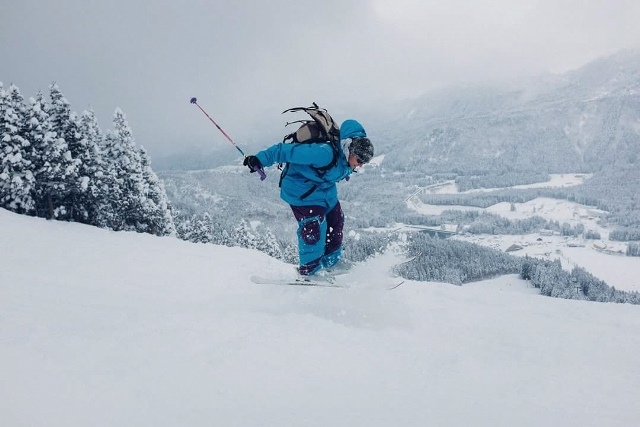
|
| Powder Snow Nagano
|
Like all things, this long winter eventually passed, too. In early spring, we participated in a lotus root (renkon) harvest experience. Renkon are grown in paddies with mud up to waist height, and a powerful hose is used to blow away the mud and blindly search for the submerged roots. And on March 5th, ambassador Hayashi visited Kanazawa! I had already briefly met the ambassador to Belgium when he gave a lecture at my university, KU Leuven, and it was nice to see him again. He visited Mayor Yamano at city hall, and he also visited Kanazawa University, where he had a chat with the university president as well as with 2 exchange students from Ghent.
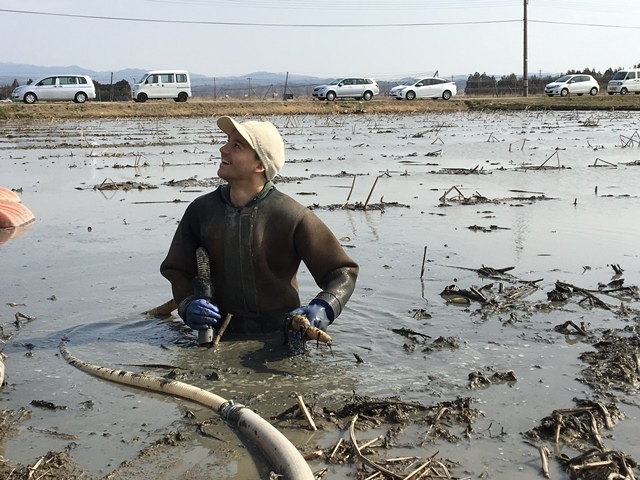
|
| Lotus Root Harvest
|
Also, in March, I ran my first marathon ever, completing one of my personal goals that I had set for my time here in Japan as a JET. I had run several half marathons in Belgium before, but I had never challenged the full 42.195km. Due to the long winter and meters of snow, it had been hard for me to train sufficiently, so of course I was completely exhausted and had to walk parts of the race near the end. But I finished it, and after I crossed the line, I found my colleagues waiting for me, congratulating me and taking a picture of my blissful, tired expression.
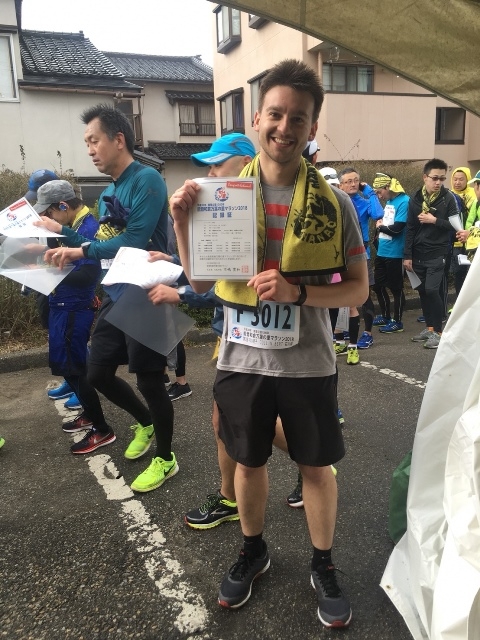
|
| Wakura Marathon
|
Of course, spring in Japan means sakura or cherry blossom trees. Hanami or sakura viewing is a favorite pastime of the Japanese, and increasingly, foreign residents in Japan. After seeing the early blossoms in the Kanazawa Castle Park, I spent a weekend in Tokyo and relaxed under the sakura trees of Ueno Park. There were so many people!
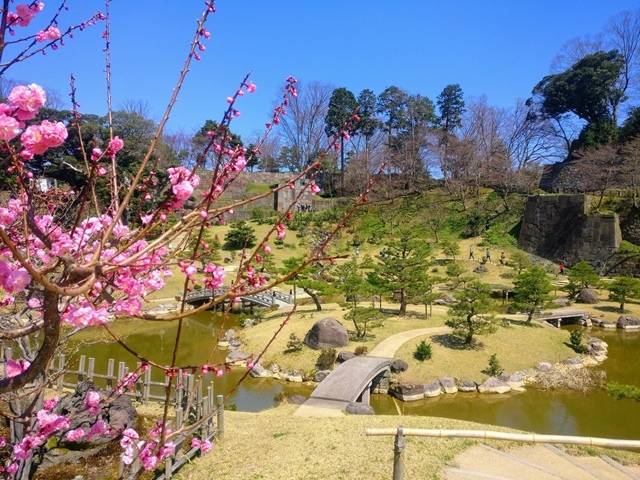
|
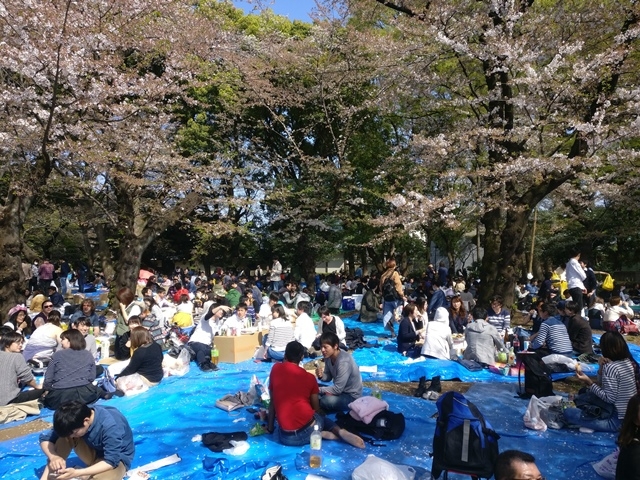
|
| Spring in Kanazawa Castle Park
|
Hanami in Ueno, Tokyo
|
In late March, I went to visit my good friend in Shimane again. We explored some more of the village where he lives, and we also drove up to Izumo to visit Izumo Taisha, one of the most ancient and important Shinto shrines in Japan. It is said that one third of all myths in the Kojiki, the 8th century collection of myths that is the oldest chronicle in Japan, are about Izumo. Having spent 3 weeks studying in Ise about the Ise Grand Shrine, which is regarded as the other major Shinto sanctuary, it was very interesting to compare both sites.
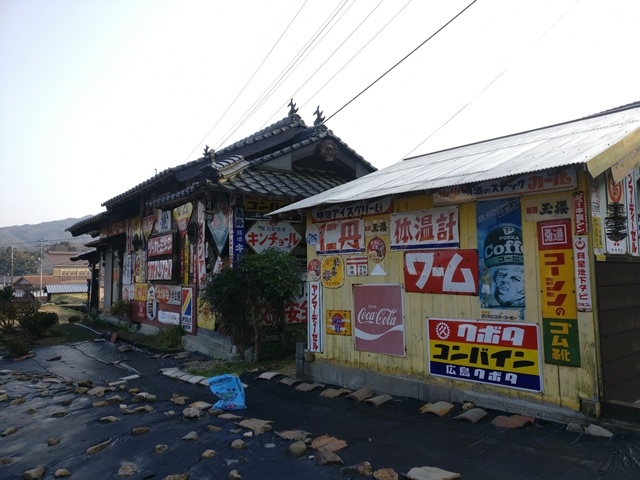
|
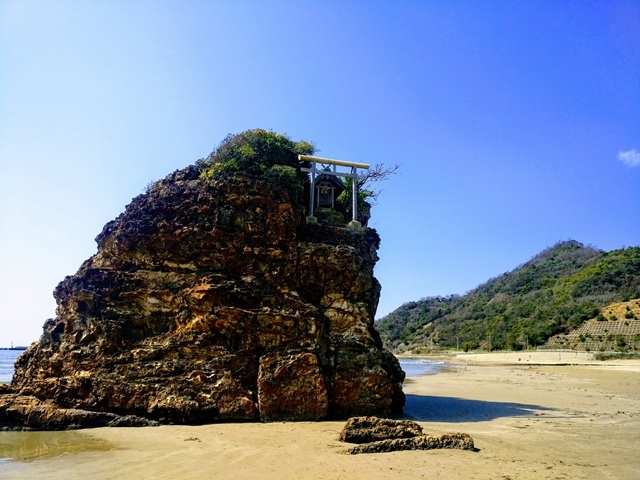
|
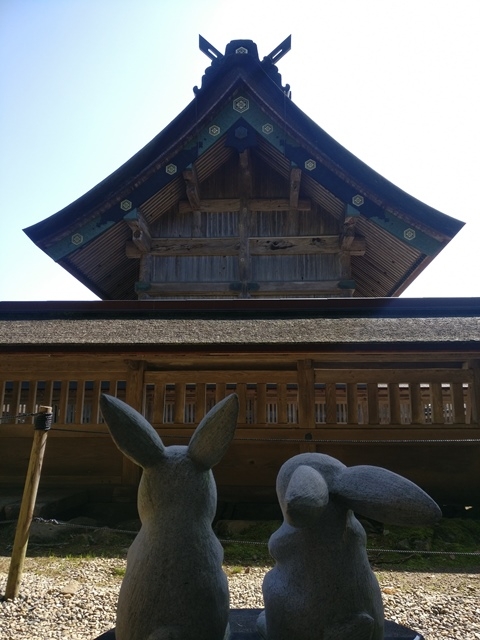
|
| Onancho, Shimane |
Izumo Taisha 1 |
Izumo Taisha 2 |
Spring progressed, the weather got warmer, and Golden Week, a long connection of holidays, was approaching. But before Golden Week, there was another interesting work experience. The Kanazawa CIRs got to try harvesting bamboo shoots or takenoko. For this, we left early in the morning for an undisclosed location behind a temple somewhere in Kanazawa. Fresh takenoko are a delicacy, so if the location could not be made public for fear of people trying to harvest the bamboo shoots during the night. Bamboo grows incredibly fast, up to 91cm per day. The shoots are only edible in the very first stage of their growth, so they must be harvested starting as early as possible in the morning, and ideally throughout the whole day, for several weeks. This is hard labor, as the harvest include walking around the earthy slopes spotting the small shoots, digging them out, and chopping them off at the base. After a few hours (even the vice mayor joined us!) we went to a cooking facility to savor the delicacy in a variety of dishes.
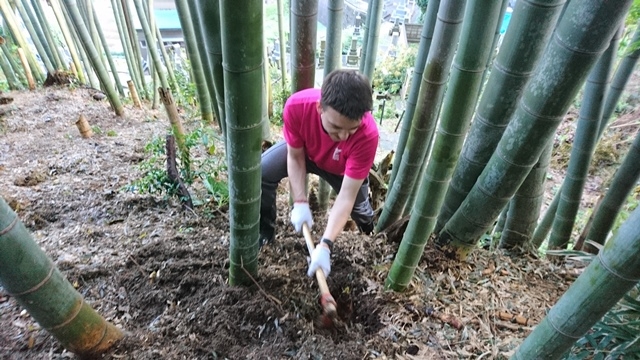
|
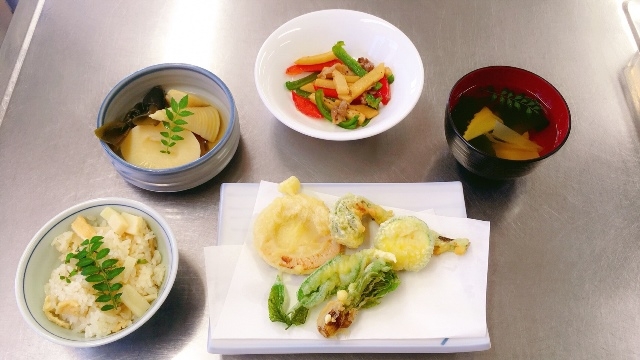
|
| Bamboo Shoot Harvest
|
Bamboo Shoot Delicacies
|
Then came May, and Golden Week. The weather was already warm, and I was in holiday mode. My Mexican CIR friend from Osaka and I decided to spend our week doing a part of the Shikoku 88 Temples pilgrimage. This sacred route goes around the entire island of Shikoku, through all 4 prefectures, taking about 6 to 8 weeks to complete on foot. The pilgrimage is a tribute to the Buddhist monk Kukai, founder of the Shingon sect of Buddhism in Japan. I had already done a part of this pilgrimage during my time in Kobe 3 years earlier. It is an amazing trip through forests, over mountains, and along ocean coasts. The hospitality of the locals is stunning, especially if you wear the traditional pilgrim’s clothing. We never had to pay for any lodging and we met some truly wonderful people along the road. I really hope I can finish the rest of the pilgrimage one day.
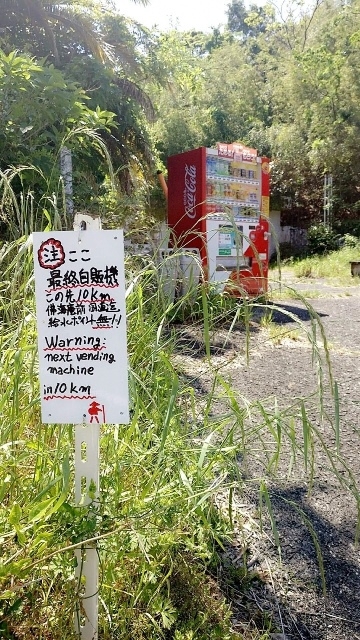
|
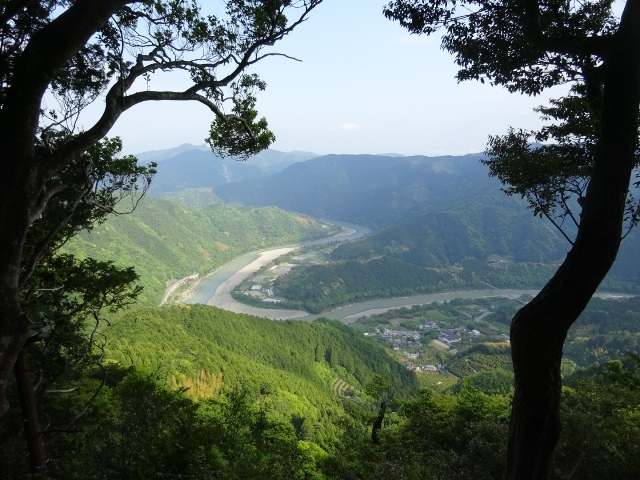
|
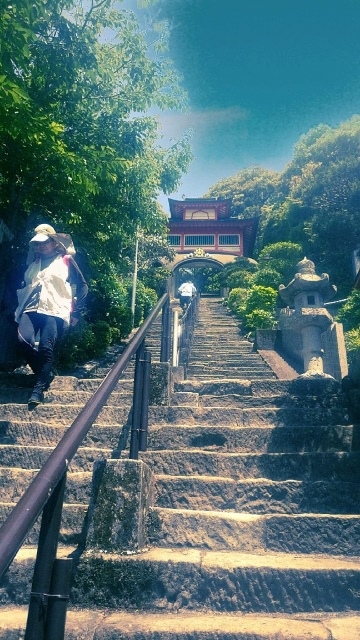
|
| Shikoku Pilgrimage 1 |
Shikoku Pilgrimage 2 |
Shikoku Pilgrimage 3 |
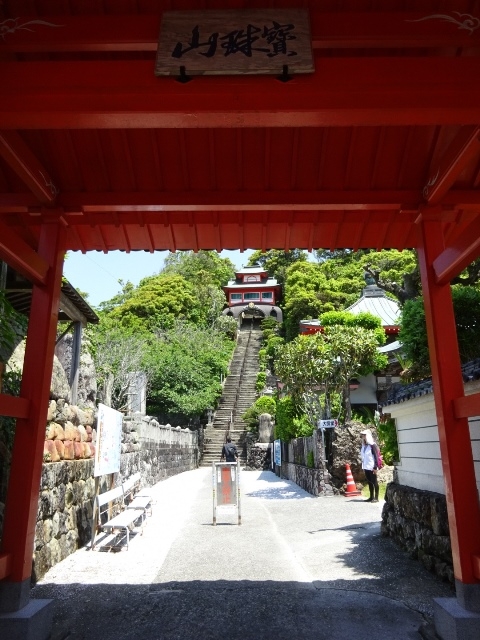
|
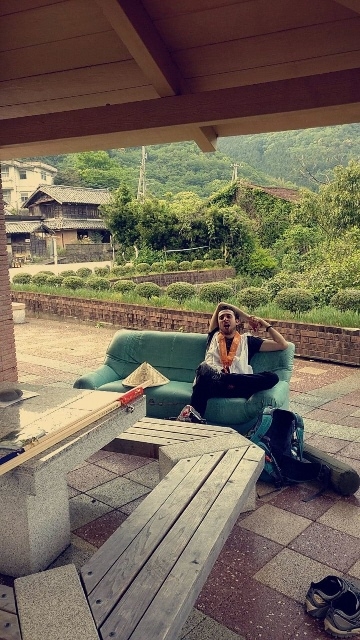
|

|
| Shikoku Pilgrimage 4 |
Shikoku Pilgrimage 5 |
Shikoku Pilgrimage 6 |
After Golden Week, summer was soon to come, and I volunteered on the Ishikawa Prefecture JET orientation for new arrivers. I and a colleague sempai introduced life in Ishikawa and work as a CIR to three newcomers; one in Suzu up north, one in Kaga down south, and one in Kanazawa, Hayley, who would become my direct colleague. It felt strange to already be in the seat of the person I was listening to just one year ago. But having my sempai, who is on his fifth year, next to me was a big help. The orientation was a success, and it has been a pleasure working with the new Kanazawa CIR team since.
Late summer was busy enough, with the first edition of the Kanazawa Kagayaki University, a two-day program where local students, exchange students and CIRs learned about “machiya” townhouses and worked together to present our newly learned knowledge following right after the orientation. Then, we had several school visits in both elementary and middle schools.
Finally, in October, the International Friendship Festival took place. This annual festival is one of the biggest international exchange events in Kanazawa, featuring a world stage with various performances, many food stands and workshops organized by international friendship organizations within Ishikawa. Kanazawa City also works together with other central Ishikawa cities to set up a booth, introduce the CIRs as international agents and foreign residents, and play games with local kids. I presented a mini-course on manga, comic book, and bande dessinée culture in various regions of the world, and we also did a little face painting workshop. It was a lot of fun, and these kind of events where you are really in contact with the locals motivates you to keep up the internationalizing efforts.
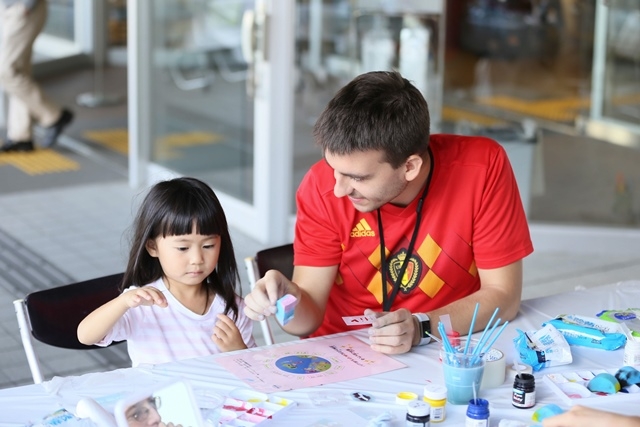
|
| International Friendship Festival
|
Next up were two even bigger events: the Kanazawa marathon, and also my first international business trip… But these will be topics for a next report.
See you then!
|